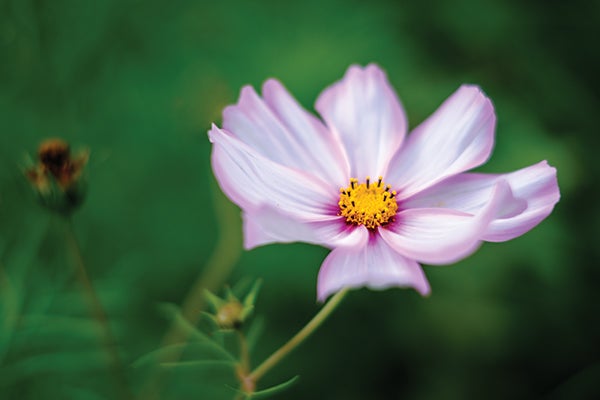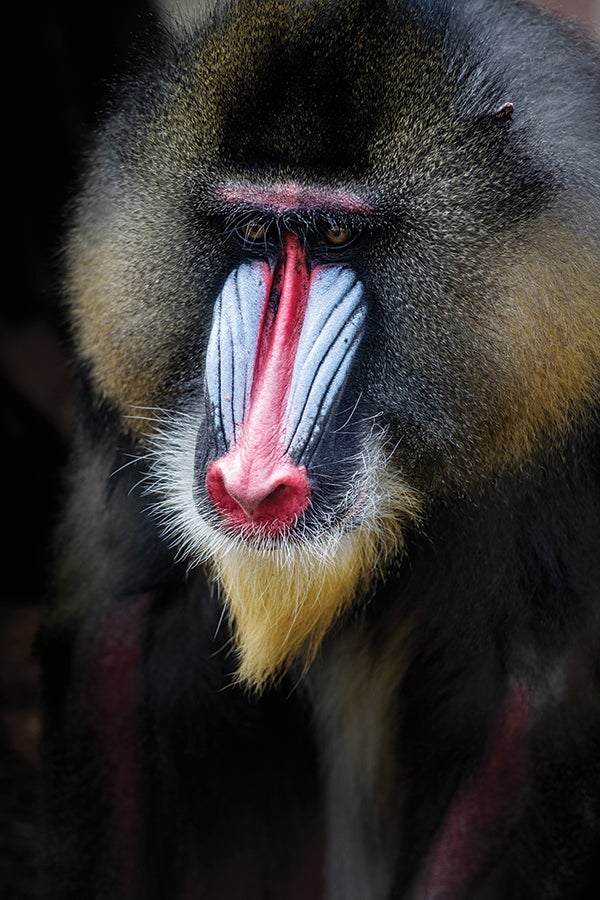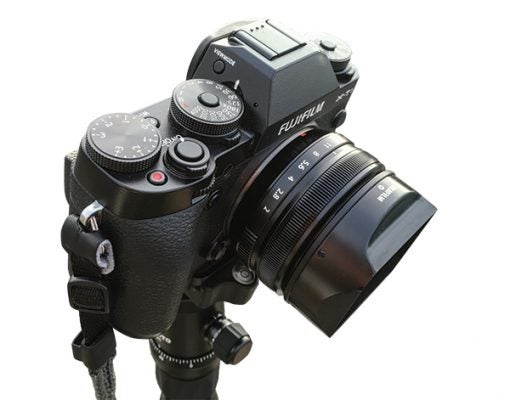If you’re new to the Fuji system, you’ll want to make sure you choose the best glass available. Here, Andrew Gibson reveasl three of his favourite optics

The 18mm f/2 lens mounted on a Fujifilm X-T1 camera during a landscape shoot
The Fujifilm X series is a relatively new line of cameras – many photographers who buy a Fujifilm camera do so in order to supplement their current digital SLR system or even replace it. If this is you, it means you’ll need to buy some new lenses as well as a body. The question naturally arises as to which lenses would be most suitable, and how many to buy.
The answer depends on what subject matter you intend to shoot. I advocate taking the simple approach when it comes to gear acquisition, and therefore I’d recommend buying no more than three lenses when you start out. This should cover all your shooting needs and you can always buy more lenses in the future if you find you need them.
Limiting your initial purchases saves you money. More importantly, from the creative point of view, it encourages you to learn to get the best out of your selected lenses.
Any advice regarding lens purchases is always personal, but these are my recommendations. The selection is a little biased because I am a big fan of prime lenses. One of the benefits of the Fujifilm X-series is that Fujifilm makes wideangle prime lenses that Nikon and Canon lack for their APS-C cameras (the 14mm f/2.8, 16mm f/1.4, 18mm f/2 and 23mm f/1.4 are all great examples). If this is one of the things that attracted you to Fujifilm, you are going to be very happy indeed.
The 18mm f/2

Island Bay, Wellington, New Zealand.
The 18mm f/2 lens is ideal for taking landscape photographs.
90 seconds @ f8, ISO 200, X-Pro 1
I make this suggestion with landscape photography in mind, although the 18mm f/2 is also a good lens for street and architectural photography, as well as environmental portraiture. It’s a truly versatile piece of kit that you can use for many subjects.
The two things I like about this lens are the relatively inexpensive price and the size (it’s nearly small enough to be described as a pancake lens). You can slip it into your camera bag without noticing the extra weight, and that means it makes it an ideal addition to any lens collection.
It’s a great candidate for your first choice of wideangle Fujinon, and you can always add a lens with a shorter focal length (such as the 14mm f/2.8 or 16mm f/1.4) or a wideangle zoom (such as the 10-24mm f/4) in the future.
Another benefit of smaller lenses like the 18mm f/2 is that they take smaller filters than their digital SLR equivalents. This can add up to hundreds of pounds of savings when considering circular polarisers, ten-stop neutral density filters and graduated neutral density filters, and is one of the factors that makes the Fujifilm X-series a good choice for landscape photographers.
Lens filters are essential accessories and it is wise to think ahead to what filters you will need when you buy a lens. You may be interested to know that Lee Filters makes a square filter system (Seven5) for smaller camera systems and the savings are significant compared to its larger filter systems. But please note that not all Fujifilm lenses are small enough to work with the Seven5 system, the notable exception in the wideangle lens department being the rather hefty 10-24mm f/4 zoom.
The 35mm f/1.4

Ourense, Spain.
The 35mm f/1.4 has a minimum focusing distance of 30cm, making it ideal for taking close-up photographs of flowers.
1/500sec @ f/1.8, ISO 200, X-T 1
My second suggestion, the 35mm f/1.4 lens, takes the place of a 50mm prime on a full-frame system. Just like a 50mm prime, it’s an amazingly versatile lens. You can use it for portraits, street photography or for taking close-up photos of flowers and other objects. Combine it with one of Fujifilm’s extension tubes and you can get amazingly close to your subject. Plus, the wide f/1.4 aperture lets you create images with amazing bokeh, or shoot in low light without raising the ISO too much, or both.
Best of all, this is another small, light lens that you’ll hardly notice in your camera bag. Compare it to the Canon 35mm f/1.4 (made with full-frame cameras in mind) and you truly appreciate the difference to size and weight that owning a lens built specifically for an APS-C system makes. You can carry it around all day without it becoming a burden, always a plus for street and travel photography.
The 35mm f/1.4 lens came into its own for me last year during a trip to China. I enjoyed using it for street photography, where it seemed to strike a nice balance between a wideangle lens, which forces you to get closer and include more of the background, and the longer 56mm lens which I also tried out.
The 56mm f/1.2

Jerez, Spain.
The Fujinon 56mm f/1.2 lens works just as well for taking portraits of animals as it does of people.
1/250sec @ f/2.8, ISO 400, X-T 1
This short telephoto is the ideal portrait lens. The focal length is long enough to give you portraits with minimal facial distortion, and short enough so that you are sufficiently close to your model to have a conversation and give directions without raising your voice.
The wide aperture of f/1.2 gives beautiful creamy bokeh, or you can close the aperture ring down a stop or two for sharper images and more depth of field.
It also comes in handy for landscape photography. If you are taking photos in a hilly or mountainous environment, lenses with longer focal lengths are ideal for compressing perspective and drawing distant peaks closer in, emphasising their height and size.
The only drawback of this lens is that it is relatively large and heavy compared to the other two lenses, especially with the lens hood fitted. If you’ve come from a full-frame system you’ll be wondering what the fuss is about, but it may make your X-series camera feel a little front heavy.
I counter that by using an X-T1 with the portrait grip. This also has the advantage of letting me turn the camera on its side for portrait orientation photos. I love this combination as the grip allows me to add an extra battery so I can shoot for longer before switching.
Equivalent angle of view
Even though most photographers use crop sensor cameras it is still conventional to refer to focal lengths in terms of their 35mm equivalent – the focal length required to achieve the same angle of view on a full-frame camera. With Fujifilm cameras you can calculate this easily by multiplying the focal length of the lens by 1.5 (the crop factor of the APS-C sensor). Hence the 18mm f/2 has the same angle of view as a 27mm lens on a full-frame camera; the 35mm f/1.4 is more or less the equivalent of a 42mm lens; and the 56mm f/1.2 is like using an 84mm lens.
OIS pros and cons
None of the recommended lenses has Optical Image Stabilisation (OIS). Personally, I don’t think it is necessary, although some readers who are accustomed to using image-stabilised lenses on other camera systems may disagree. Fujifilm does have several wideangle zooms with OIS if you feel it is a vital feature.
The key thing you need to understand about OIS is that while it helps prevent blur caused by camera shake, it does nothing to prevent blur caused by subject movement.
This is fine if you want to use blur for creative reasons, but it is not helpful when taking portraits or with street photography. A lens like the 56mm f/1.2 needs to be used at a shutter speed of around 1/250sec to prevent blur caused by your model moving.
If you use a lens like the 18mm f/2 for landscape photography and you want to use slow shutter speeds then you are better off placing the camera on a tripod. You can be more precise with the composition, and a good tripod lets you use shutter speeds as long as six minutes or more.
The 35mm f/1.4 could perhaps benefit from OIS, but the wide aperture, combined with the excellent image quality that Fujifilm cameras give at high ISOs, lets you work in very low light conditions.





